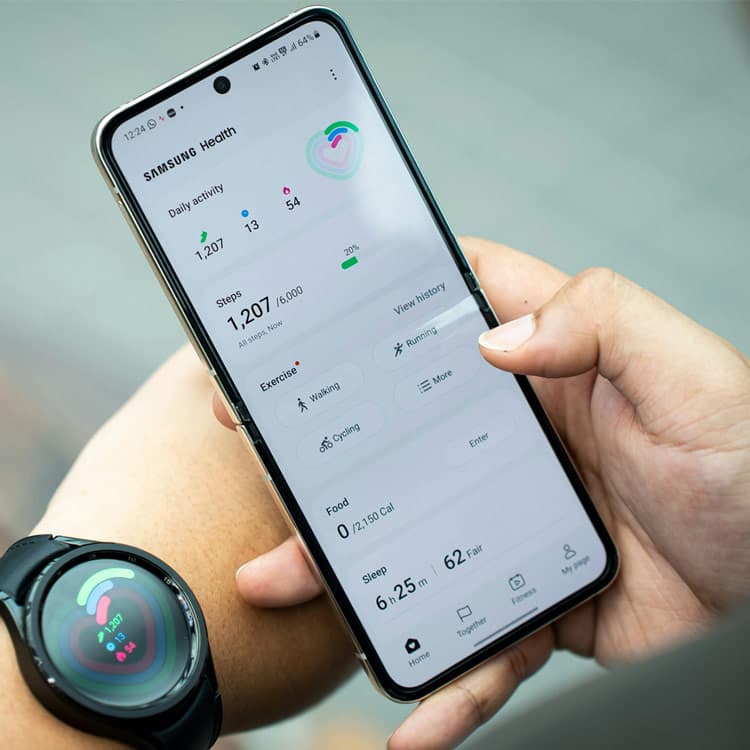A solid foundation of success is built by asking the right questions. A great product roadmap needs to be crafted by establishing an understanding of your process going forward by asking these essential questions, these will shape the trajectory of your innovation initiatives.
Let's get into my comprehensive guide to the pivotal questions to ask yourself and your team so your product roadmap can be as successful as possible:
1. What is the Problem We're Solving?
A great product begins with a clear understanding of the problem it aims to solve. Delving deep into the root issues ensures that the solution addresses genuine needs, laying the groundwork for a successful roadmap.
2. Who Are Our Users?
Identifying and empathising with the end-users is paramount. Knowing their pain points, preferences, and behaviours allows for the creation of a product that seamlessly integrates into their lives.
3. How Does Our Product Stand Out?
In a crowded market, differentiation is key. An innovative product roadmap should outline unique selling propositions that set the offering apart from competitors, creating a compelling value proposition.
4. What Technologies Should We Leverage?
Staying ahead in the innovation game often involves embracing cutting-edge technologies. Assessing the technological landscape and identifying tools and platforms that align with the product vision ensures a roadmap that is both scalable and future-proof.
5. What is the MVP (Minimum Viable Product)?
Embracing the concept of a Minimum Viable Product allows for an agile development process. Focusing on essential features and functionalities enables quicker market entry and feedback collection.
6. How Will We Gather User Feedback?
Continuous feedback loops are invaluable. A successful product roadmap includes mechanisms for gathering, analysing, and incorporating user feedback at every stage, fostering a dynamic and responsive development process.
7. What Are the Key Milestones?
Establishing clear milestones provides a roadmap with structure. Milestones act as markers of progress, helping teams stay on track and ensuring that the project is moving toward its ultimate goals.
8. How Do Market Trends Impact Our Roadmap?
Staying attuned to market trends is crucial. Anticipating shifts in user expectations, emerging technologies, and industry dynamics ensures that the roadmap remains adaptable and aligned with the broader landscape.
9. What Risks and Challenges May Arise?
Foreseeing potential obstacles allows for proactive risk management. A well-crafted product roadmap includes a comprehensive risk assessment and mitigation plan, ensuring that unexpected challenges are addressed with agility.
10. How Will We Measure Success?
Defining key performance indicators (KPIs) is essential for evaluating the success of the product roadmap. Metrics related to user engagement, market share, and revenue growth provide tangible benchmarks for success.
Crafting a great product roadmap will never be "one-size-fits-all". This will be a dynamic process shaped a keen understanding of your industry. By consistently asking these essential questions, you'll be equipped to navigate the complexities of product development, ensuring that the roadmap exceeds expectations in a rapidly evolving market.
يجب صياغة خريطة طريق رائعة للمنتج من خلال فهم عملية المضي قدمًا من خلال طرح هذه الأسئلة الأساسية،
والتي ستشكل مسار مبادرات الابتكار الخاصة بك.
دعنا ندخل في دليلي الشامل للأسئلة المحورية التي يجب أن تطرحها على نفسك وعلى فريقك
حتى تكون خريطة طريق منتجك ناجحة قدر الإمكان:
1. ما هي المشكلة التي نعمل على حلها؟
المنتج الرائع يبدأ بفهم واضح للمشكلة التي يهدف إلى حلها.
إن التعمق في المشكلات الجذرية يضمن أن الحل يلبي الاحتياجات الحقيقية، ويضع الأساس لخارطة طريق ناجحة.
2. من هم مستخدمونا؟
يعد تحديد المستخدمين النهائيين والتعاطف معهم أمرًا بالغ الأهمية.
معرفة نقاط الألم، والتفضيلات، والسلوكيات الخاصة بهم يسمح بإنشاء منتج يندمج بسلاسة في حياتهم.
3. كيف يبرز منتجنا؟
في سوق مزدحم، التمايز هو المفتاح.
ينبغي لخريطة طريق المنتج المبتكرة أن تحدد عروض البيع الفريدة التي تميز العرض عن المنافسين، مما يخلق عرض قيمة مقنعًا.
4. ما هي التقنيات التي يجب علينا الاستفادة منها؟
غالبًا ما يتطلب البقاء في المقدمة في مجال الابتكار تبني أحدث التقنيات.
إن تقييم المشهد التكنولوجي وتحديد الأدوات والمنصات التي تتماشى مع رؤية المنتج يضمن وجود خارطة طريق قابلة للتوسع ومواكبة للمستقبل.
5. ما هو الحد الأدنى للمنتج القابل للتطبيق (MVP)؟
إن تبني مفهوم الحد الأدنى من المنتج القابل للتطبيق يسمح بعملية تطوير مرنة وسريعة.
يتيح التركيز على الميزات والوظائف الأساسية دخول السوق بسرعة وجمع التعليقات بشكل أسرع.
6. كيف سنجمع تعليقات المستخدمين؟
حلقات ردود الفعل المستمرة لا تقدر بثمن.
تشتمل خريطة طريق المنتج الناجحة على آليات لجمع، تحليل، ودمج تعليقات المستخدمين في كل مرحلة،
مما يعزز عملية تطوير ديناميكية وسريعة الاستجابة.
7. ما هي المعالم الرئيسية؟
إن تحديد معالم واضحة يمنح خريطة الطريق هيكلًا.
تعمل المعالم كعلامات للتقدم، وتساعد الفرق على البقاء على المسار الصحيح،
وتضمن أن المشروع يتجه نحو أهدافه النهائية.
8. كيف تؤثر اتجاهات السوق على خريطة الطريق الخاصة بنا؟
البقاء على اطلاع باتجاهات السوق أمر بالغ الأهمية.
إن توقع التحولات في توقعات المستخدم، والتقنيات الناشئة، وديناميكيات السوق يضمن أن تظل خريطة الطريق قابلة للتكيف ومتوافقة مع المشهد الأوسع.
9. ما هي المخاطر والتحديات التي قد تنشأ؟
التنبؤ بالعقبات المحتملة يسمح بإدارة المخاطر بشكل استباقي.
تتضمن خريطة الطريق المصممة جيدًا تقييمًا شاملًا للمخاطر وخطة للتخفيف منها،
مما يضمن معالجة التحديات غير المتوقعة بسرعة وفعالية.
10. كيف سنقيس النجاح؟
يعد تحديد مؤشرات الأداء الرئيسية (KPIs) أمرًا ضروريًا لتقييم نجاح خريطة طريق المنتج.
توفر المقاييس المتعلقة بمشاركة المستخدم، وحصة السوق، ونمو الإيرادات معايير ملموسة للنجاح.
.jpg)
.jpg)

